The Otways are home to incredible species – from towering Mountain Ash trees to the tiny Feather-tailed Glider. Koalas doze in the woodlands, Southern Right and Humpback Whales travel along the coast, the Otways Stone Fly lives in the streams and the Tiger Quoll prowls through the forests. Learn more about the wild lives of the Otways here – and check back regularly as we profile more species.
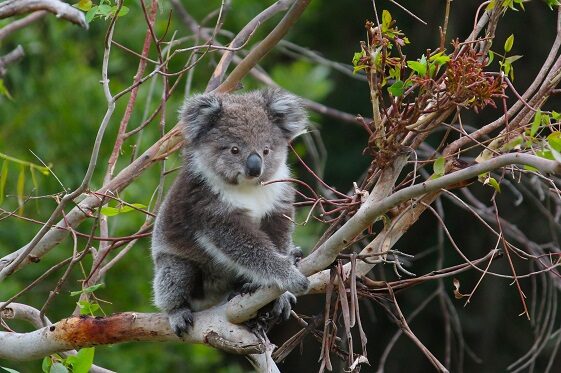
Koala
(PHASCOLARCTOS CINEREUS)
Koalas may look like cute teddy bears, but they actually have quite large claws, can be aggressive if approached, and are more closely related to a wombat than a bear.
More about koalas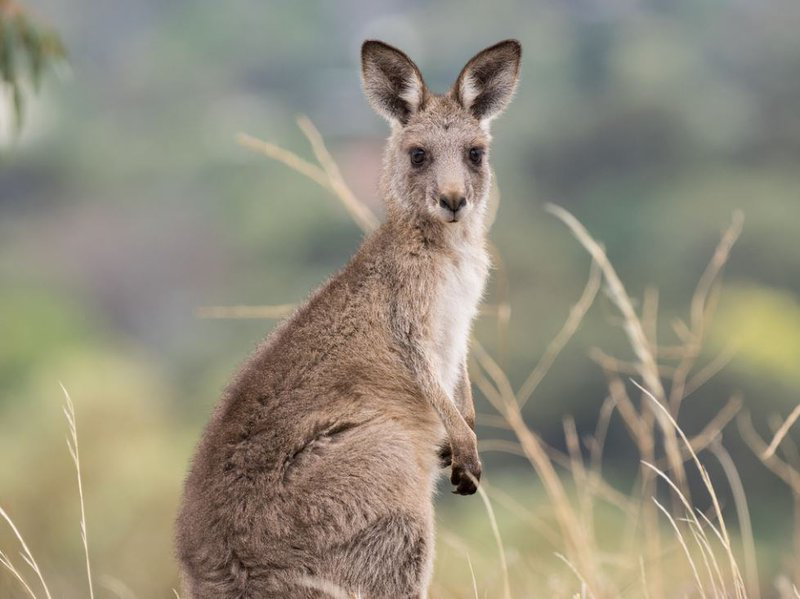
Eastern Grey Kangaroo
(MACROPUS GIGANTEUS)
Kangaroos are the largest animals in the Otways, but what makes them really stand out is the way they move – bouncing across the horizon on their strong back legs.
Read more about kangaroos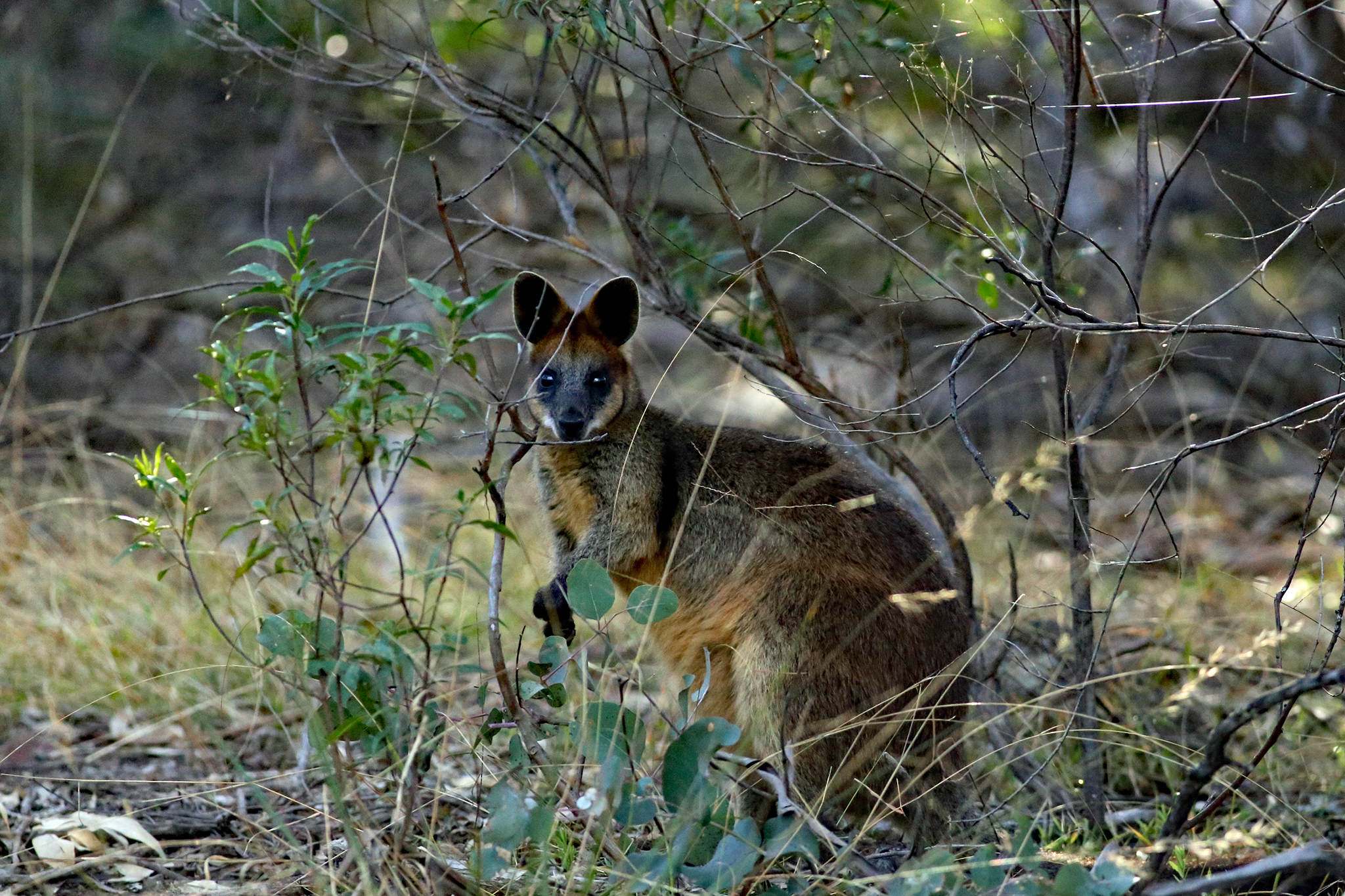
Swamp Wallaby
(WALLABIA BICOLOR)
If you see something that looks like a small kangaroo, on its own and in more bushy areas, it’s more likely to be a wallaby.
More about swamp wallabies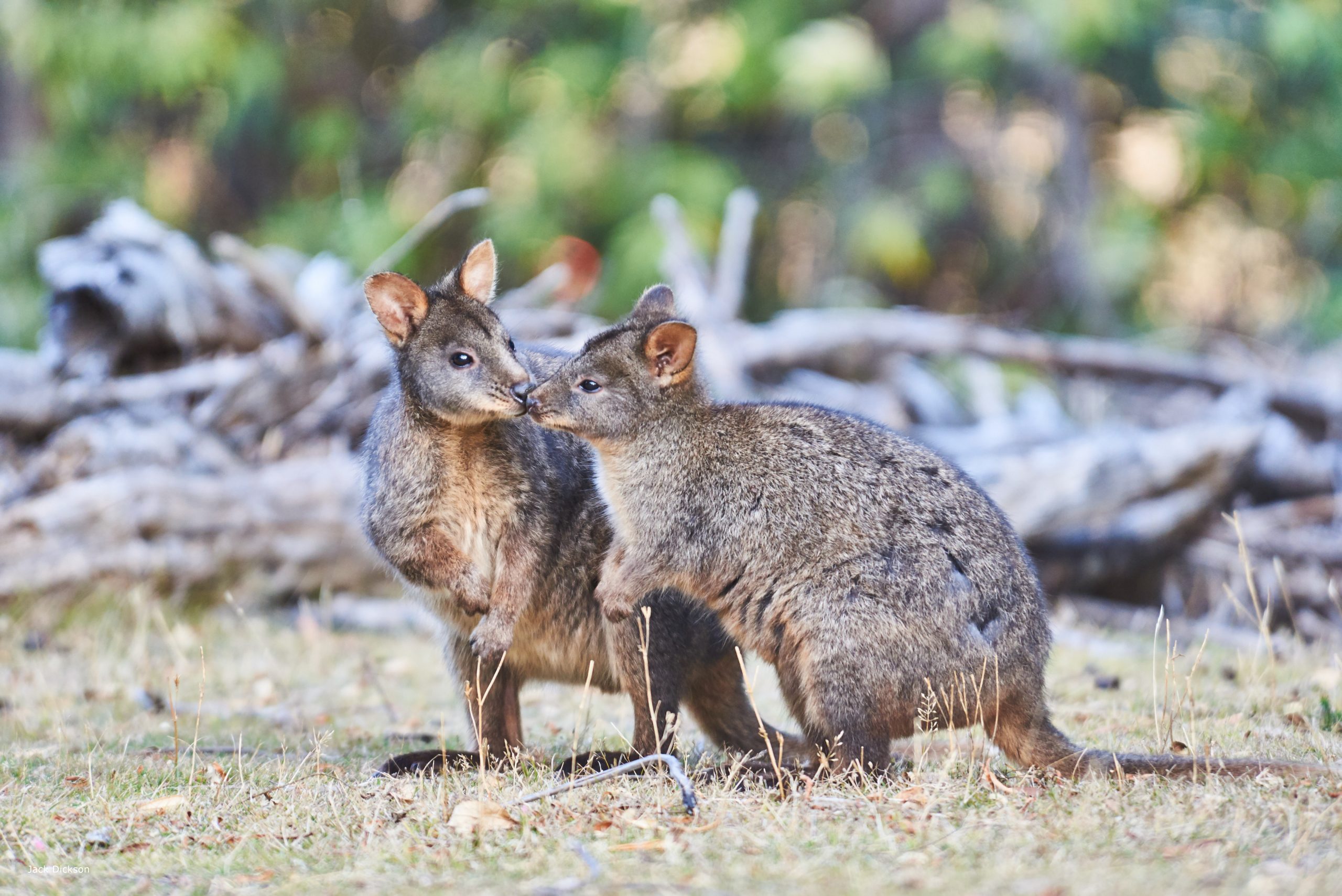
Tasmanian Pademelons
(THYLOGALE BILLARDIERII)
These charming little wallabies are only as tall as your knee. They are mostly nocturnal, but sometimes you’ll be lucky enough to encounter one feeding during the day.
More about pademelons
Eastern Bettong
(BETTONGIA GAIMARDI)
These small macropods are a yellowish-grey colour, with cream feet and a white belly. They are nocturnal coming out at night-time to feed on fungi, seeds, roots and insects.
Learn more about bettongs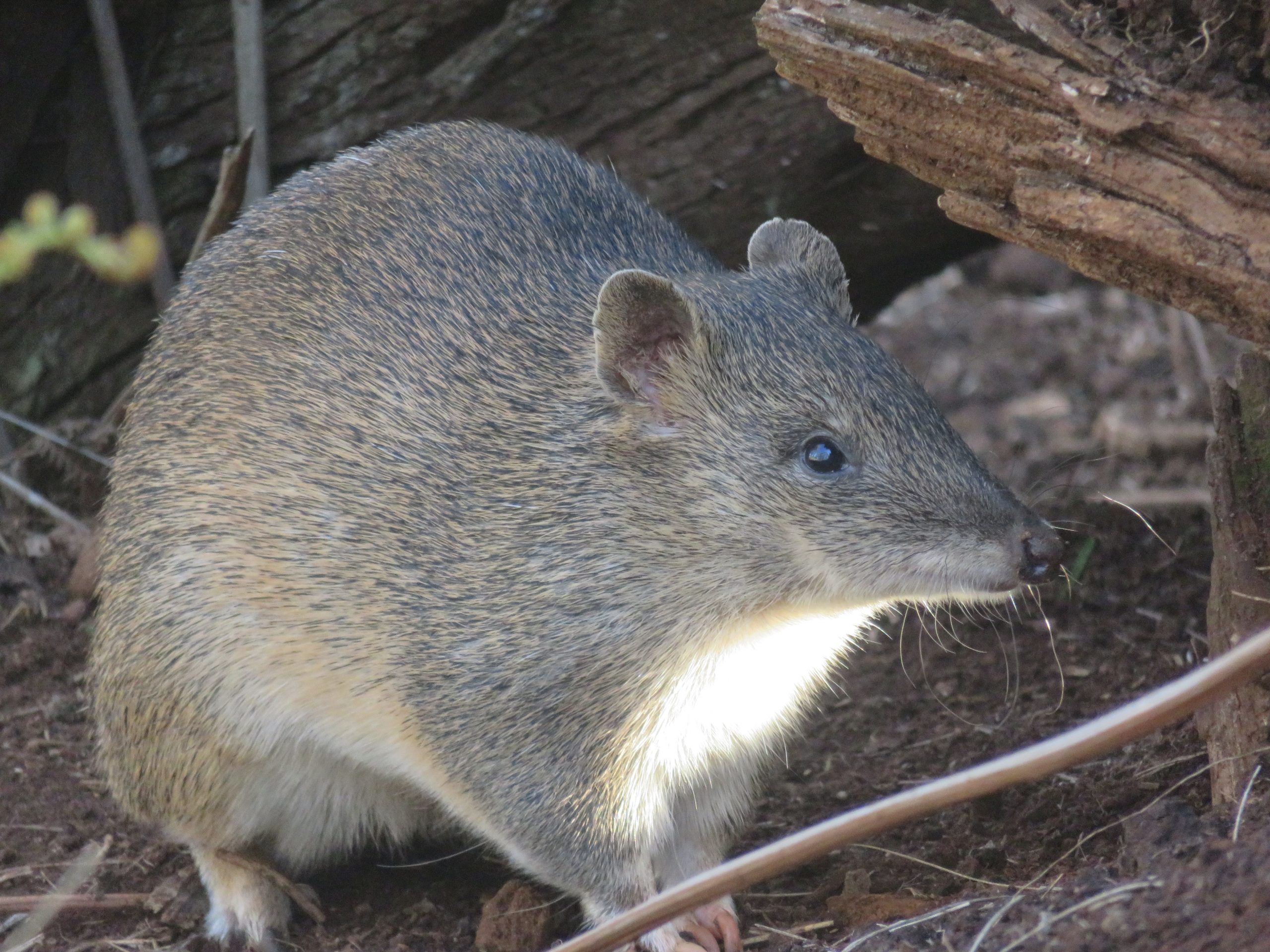
Southern Brown Bandicoots
(ISOODON OBESULUS)
Another small, brown, ground dwelling mammal, the Southern Brown Bandicoot can best be identified by their long nose, small rounded ears, big bottom, and short tail.
More about these bandicoots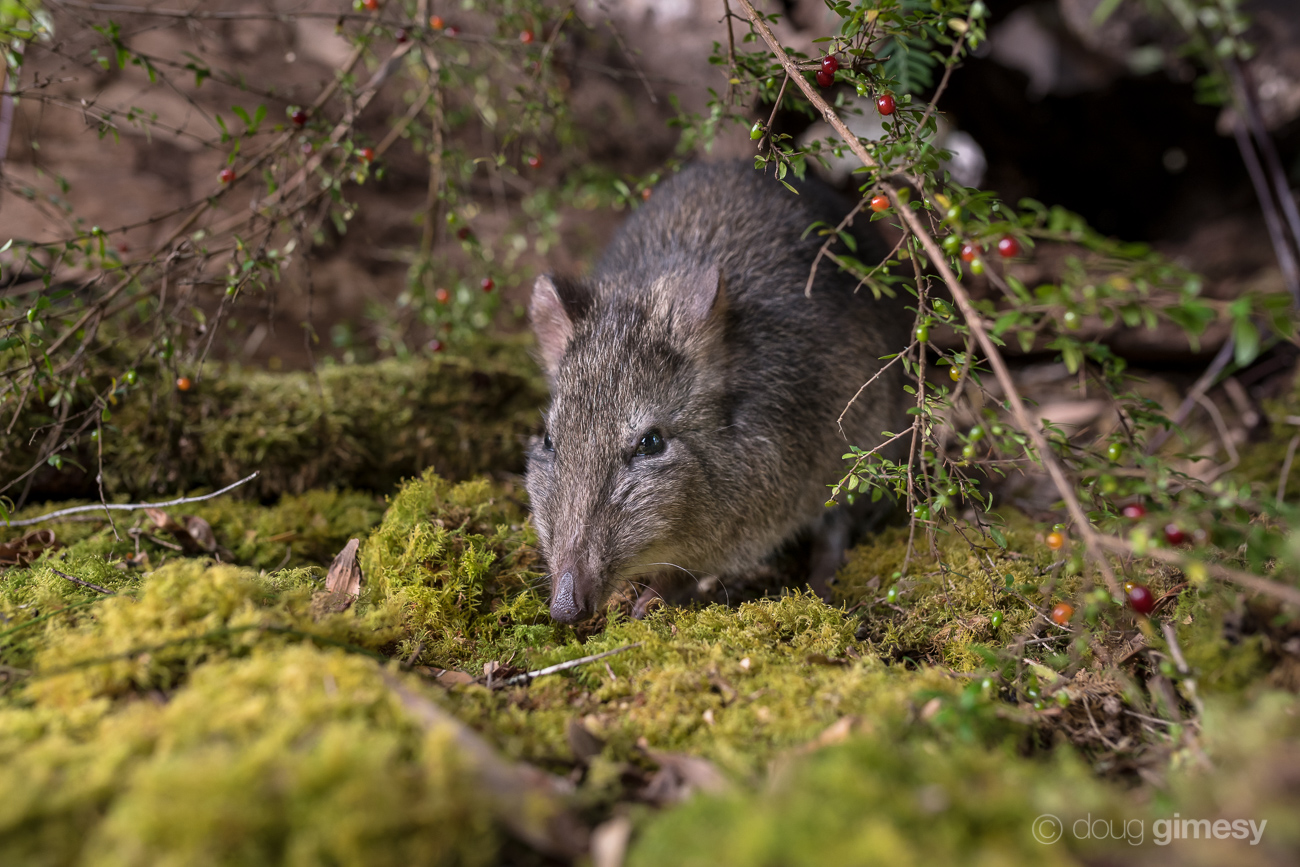
Long-nosed Potoroo
(POTOROUS TRIDACTYLUS)
An Otways favourite, the Long-nosed Potoroo is a tiny, fluffy cousin of the kangaroo. Although they are still persisting in the Otways, they are nocturnal, so not often seen.
More about potoroos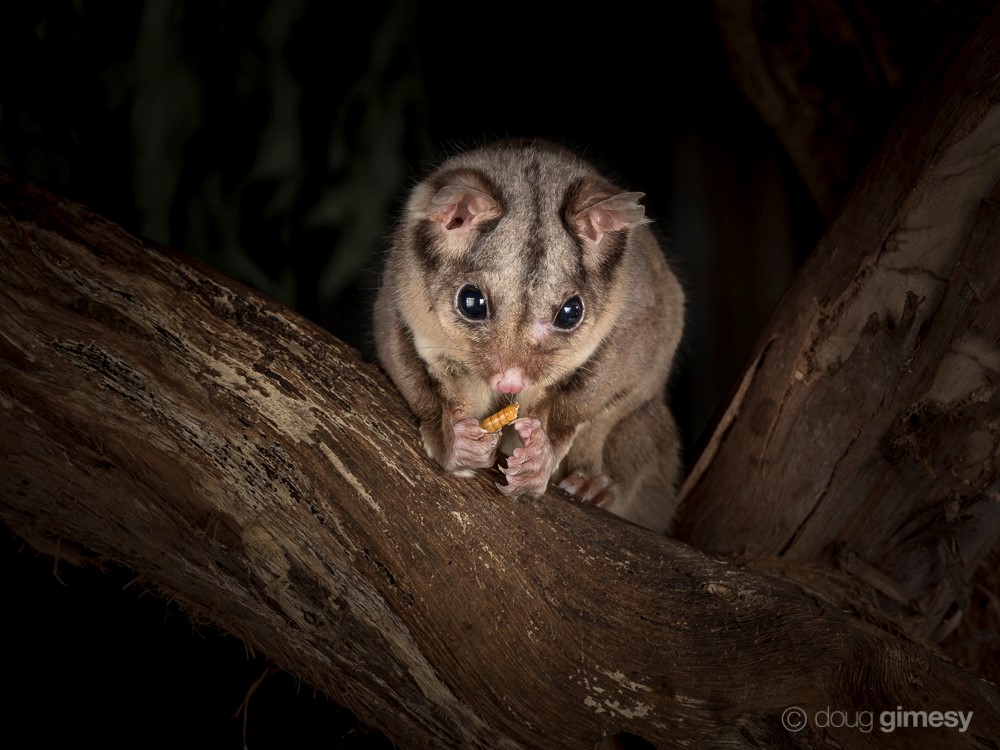
Sugar Glider
(PETAURUS BREVICEPS)
Sugar Gliders are enchanting squirrel-like animals that live in forests and woodlands and travel through the treetops by gliding with the aid of membranes extending from their fifth finger to their ankle. (Photo: Doug Gimesy)
More about sugar gliders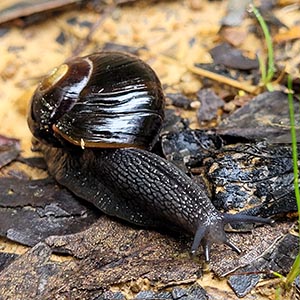
Otway Black Snail
(VICTAPHANTA COMPACTA)
Otway Black Snails are carnivorous, eating insect larvae, earthworms, slugs and other snails. They do not eat their own species. They are mostly nocturnal but can be seen during the day in cool, damp weather. Their range is quite narrow as they only occur in the Otway Ranges. They are highly susceptible to damage to their habitat.
More about this amazing snail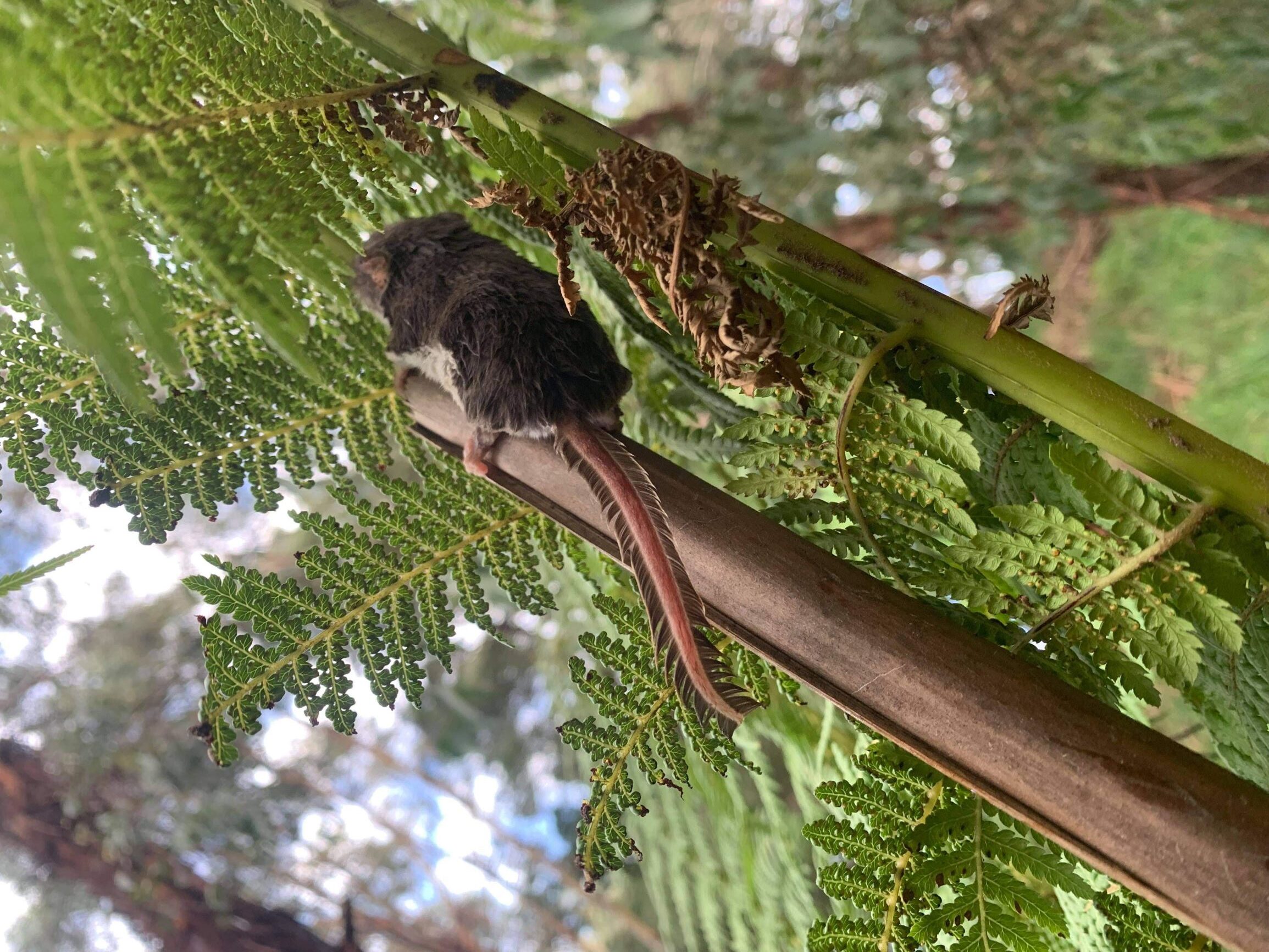
Feathertail Glider
(ACROBATES PYGMAEUS)
Feathertail Gliders are omnivorous, feeding on pollen, nectar, moths, ants and termites, and their long thin tongues enable them to collect pollen and consume semi-liquid food.
More about this glider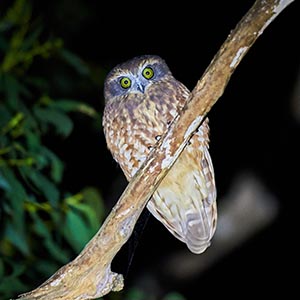
Southern Boobook
(NINOX NOVAESEELANDIAE)
Distinctive dark facial disks, rimmed in white, green eyes and yellow, short grey beak. Upper parts dark brown, chest speckled brown and white, becoming solid white down to the tail. Found in woodland and forests of the Otways, pairs will call to each other while hunting in a soft ‘Boo book’
More about the boobook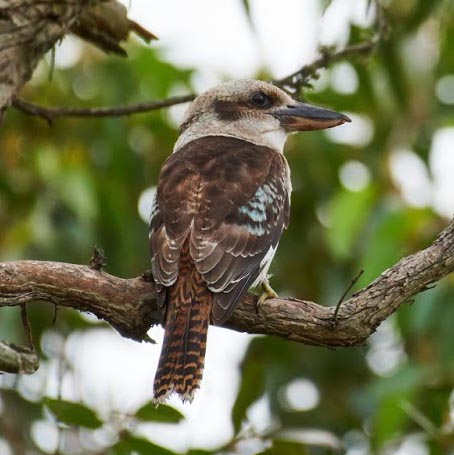
Laughing Kookaburra
(DACELO NOVAEGUINEAE)
The largest of the kingfisher family, with a cream body, a brown streak around eyes or crown, brown wings speckled with blue. A large bill with a dark upper and pale lower. Named for its rowdy laugh that echoes through the bush, they are found in forests and woodlands, or grasslands with nearby trees.
More about the kookaburra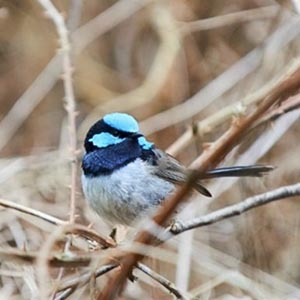
Superb Fairy-wren
(MALURUS CYANEUS)
Usually seen in a family group of 4-12, they flutter around dense understorey vegetation throughout the Otways feeding on insects and berries. Small sparrow-sized bird, a dull grey-brown upper and cream belly, female have a rufous streak around eye, males have a black throat, tail and eye streak, brilliant blue cap, and cheek flushes.
Learn more about this wren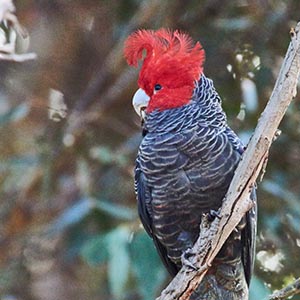
Gang-gang Cockatoo
(CALLOCEPHALON FIMBRIATUM)
Slate grey colour over entire body, often with speckled white on tips of feathers. Males have a distinctive red head and small crest, females have a grey head with speckled red and yellow through their chest. Found in wet forests in the Otways, they can gather in flocks of up to 20 individuals.
More about the gang-gang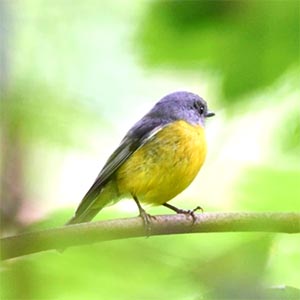
Eastern Yellow Robin
(EOPSALTRIA AUSTRALIS)
A little bird with a striking yellow chest and underside, olive brown to grey head and back and tail, black beak and dark brown eye. Often has white streak on cheek and sometimes a faint white streak on eyebrow. Usually found in pairs or groups of adults and sub-adult offspring in midstory trees along tracks. Their strident peep-peep call can be heard in the forests.
More about this robin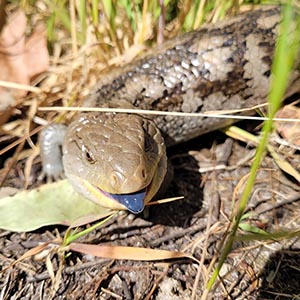
Common Blue-tongued Lizard
(TILIQUA SCINCOIDES)
Common Blue-tongued Lizards (“Blue-tongues”) are named after their bright blue fleshy tongue, which contrasts with their pink mouths. They use their tongue as a defence tool to scare off predators. When Blue-tongues feel threatened they stick out their tongue to frighten predators. They are also known to hiss when threatened. Blue-tongues can grow up to 60 cm in length. In Victoria, they inhabit a wide variety of ecosystems from coastal heathland, lowlands and mountain forests to interior plains.
Learn more about this lizard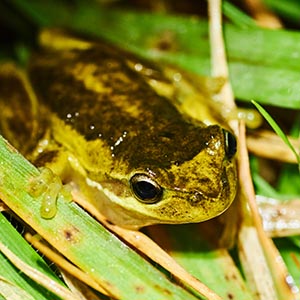
The Southern Brown Tree Frog
(LITORIA EWINGIL)
The Southern Brown Tree Frog is an agile hunter. It can leap to catch insects in mid flight. Their large sticky toes make them great climbers. Female Southern Brown Tree Frogs can lay up to 600 eggs at a time. It takes between 12 and 26 weeks for Southern Brown tadpoles to turn into frogs.
Read more about this frog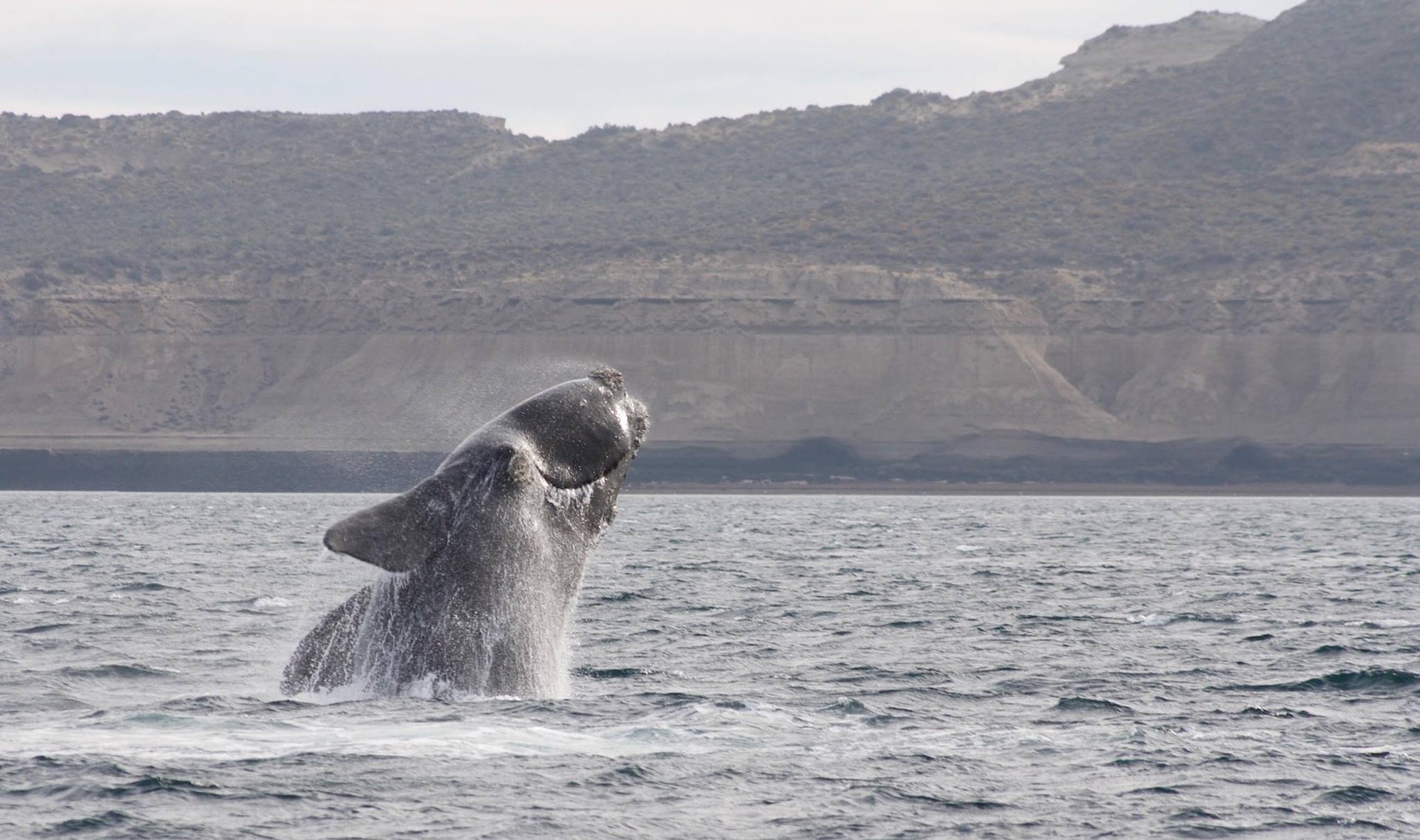
Southern Right Whale
(EUBALAENA AUSTRALIS)
Southern Right Whales can grow anywhere between 14 and 18 metres and weigh up to 80 tons – that’s as much as eight African elephants! Unlike other whale species, they have black-stocky bodies, lack a dorsal fin and possess white growths of calcified skin on their heads and chins known as callosities.
More about Southern Right Whales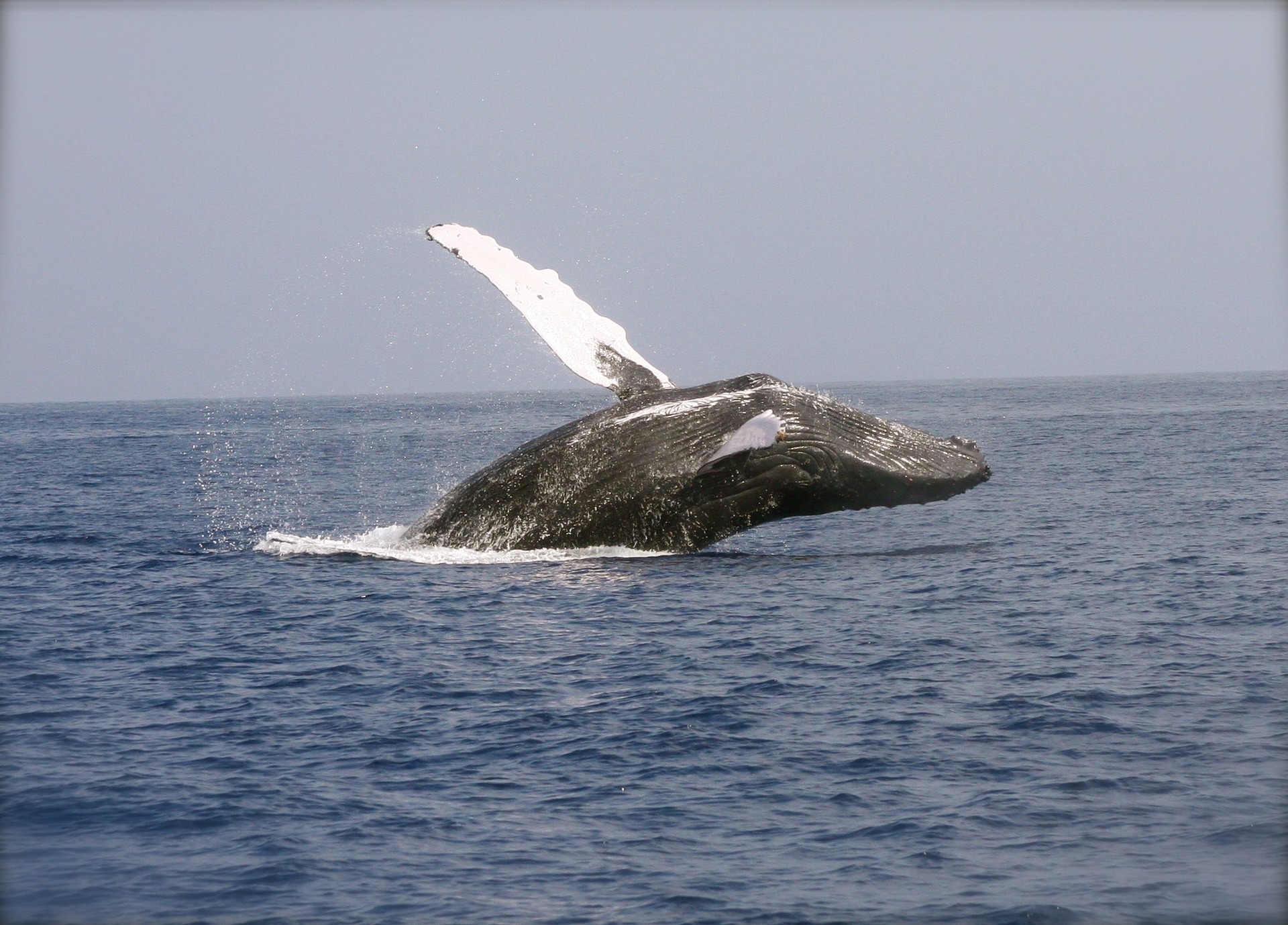
Humpback Whale
(MEGAPTERA NOVAEANGLIAE)
Humpback Whales are one of the biggest mammals in the ocean, reaching sizes bigger than a bus. They have distinct characteristics that make them easily distinguishable from other whale species – a knobbly head, long flippers, a black and white patterned underside and a large dorsal hump.
Read more about Humpback Whales